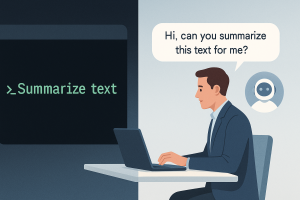
Building a Better AI: Learning from Human Decision-Making While Maintaining Ethical Guardrails
Artificial intelligence (AI) has made strides in mimicking human thinking, passing milestone tests like the Turing Test. However, as we dive deeper into developing advanced AI systems, the goal isn’t just to replicate human thought but to create something smarter, more ethical, and more reliable. To do this, we can examine human decision-making, especially simple thought processes, as a foundation for building intelligent systems. This foundation, though, must be supported by strong ethical guardrails, a challenge as complex as decision-making itself.
What is a Decision? From Simple Boolean Logic to Layered Choices
In both AI and human thought, the simplest form of decision-making is binary—a true or false choice. Imagine a light switch, with only two states: on and off. For humans, this binary decision-making forms the basis for more complex decisions, like stopping at a red light or deciding whether to eat lunch based on hunger.
For computers, this is a Boolean construct: “if this condition is true, take this action; if false, do nothing.” But unlike AI, even the simplest human choices are rarely pure “yes or no.” They’re influenced by a web of considerations, including environmental cues and underlying needs. For example, a person may choose to stop for fast food not because it’s their preferred option, but because it’s convenient, affordable, and on the way home from work.
Moving Beyond Binary: If/Then Structures and Contextual Factors
Once decisions involve more than one condition, they become more complex than a binary “yes/no.” Human decision-making is often influenced by conditional factors that shift based on context. For instance, in choosing what to wear, people consider weather, social expectations, and even mood.
AI can simulate this layered thinking through if/then structures, but it also needs access to situational data to make such decisions. An intelligent system might need to weigh multiple factors—availability of resources, user preferences, and environmental context—to give an appropriate recommendation, much like a human would.
Resource Constraints and the Impact on Decisions
In human thinking, resource availability—like nearby food or available funds—often shapes decisions. For computers, resource allocation is equally crucial. Limited processing power, memory, or data storage can restrict what an AI can accomplish. A photo storage app, for example, might prioritize storing high-resolution images only when ample space is available.
By programming AI to manage resources, developers can mirror the way humans adapt their choices to their environment. An AI that can “decide” based on available resources is more flexible and can perform efficiently under different conditions.
Conscious vs. Unconscious Processing: Structuring AI “Thought” Layers
In human cognition, not all decisions are conscious. Some are reflexive, like withdrawing a hand from a hot stove. AI systems can be designed similarly, with “hard-coded” routines that are autonomous and invisible to the user, performing tasks without direct prompts. These could include basic maintenance functions like disk defragmentation or battery conservation, similar to unconscious housekeeping processes in the human brain.
A middle layer could involve “subconscious” tasks, like an AI managing background data processing or optimizing performance. Conscious processes, in contrast, would include AI functions that engage directly with user prompts, making visible decisions that appear as answers or recommendations.
Ethical Guardrails: The Imperative of Responsible AI Design
While human decisions may be influenced by biases, AI developers aim to build systems that “think” without these flaws. This ideal isn’t easy to achieve, as biases can inadvertently seep into the AI’s algorithms, data sources, or learning processes. For example, an AI trained on biased data could replicate or even amplify human prejudices.
In response, ethical guidelines must be woven into AI design from the ground up. Every decision-making layer of an AI requires “guardrails” that restrict harmful outputs, prevent misuse, and ensure transparency. Ethical AI not only provides correct answers but can also identify potential risks and perform ongoing error-checking.
For security, these safeguards need to be embedded in the backend, out of the user’s reach. This limits the chance of hacking or misuse, which has been a real issue in the field. Hackers have successfully manipulated AI systems to produce erroneous or harmful outputs, highlighting the need for a well-secured and ethically consistent design.
Maintaining Ethical Consistency: The Key to Trustworthy AI
Once in place, these ethical guidelines aren’t static. AI systems must analyze each prompt with a consistent ethical lens, ensuring responses remain within predefined boundaries. For instance, if an AI is designed to recommend health advice, it should always default to safety-focused information, regardless of the prompt’s wording. Ethical consistency helps users trust AI systems and ensures that any suggestions AI makes are in line with societal values.
The real challenge is balancing AI’s efficiency with these ethical requirements. Constant vigilance, layered checks, and developer oversight are necessary to keep AI functioning both accurately and responsibly.
Conclusion: Toward an AI That Thinks Beyond Human Limitations
In designing a better AI, we’re not only mimicking human thought processes but also seeking to improve on them. AI has the potential to think without cognitive “noise” or bias, but only if it’s guided by robust ethical principles.
As we build AI systems that “decide” and “think” in increasingly sophisticated ways, we must recognize that ethical guidelines are the foundation upon which all other capabilities are built. Human thinking may serve as the model, but ethical AI design will be what transforms it into a tool that is not only intelligent but also safe and beneficial to society.
Tag:ethics



